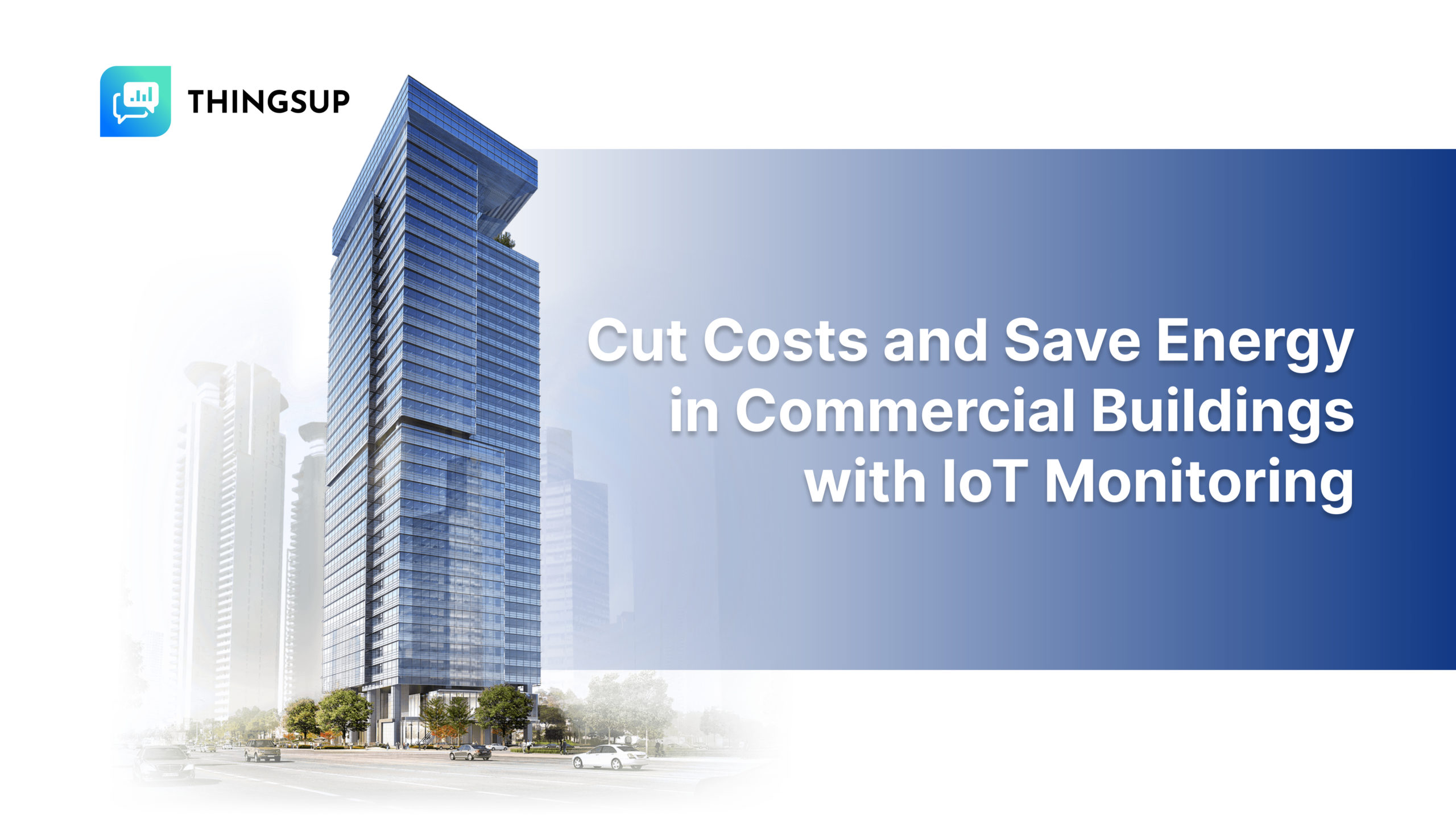Energy efficiency is a central concern for all businesses, from large factories to small institutions, from government to corporate building. Every business is looking for new ways to cut costs by reducing energy consumption in its buildings.
While businesses are pressured to cut costs and reduce carbon footprints, adopting IoT energy management system is no less than a boon for them.
These systems provide consumers with real-time energy usage insights that can help reduce energy usage.
This blog will discuss how IoT energy monitoring improves energy efficiency and saves costs in commercial buildings.
The Importance of Energy Efficiency in Commercial Buildings
Commercial buildings, such as offices of larger organizations, large hotel chains, and shopping centers, consume the most energy.
According to a report, commercial buildings account for approximately 40% of global energy use and contribute heavily to carbon dioxide emissions. In the European Union, buildings account for around 36% of all CO2 emissions. Improving energy efficiency in commercial buildings is very important. This reduces operating costs and plays an important role in combating climate change.
In addition to meeting regulatory requirements, it helps companies improve their corporate social responsibility (CSR) profiles and contribute to efforts to make the world more sustainable.
How Does IoT Energy Monitoring Work?
The power monitoring system in a commercial building continuously collects data from different sources of the building. Here is how it works:
1. Data Collection through Sensors
HVAC Systems: Temperature, humidity, and occupancy sensors monitor the indoor climate of commercial buildings. The building management system collects sensor data and enables the HVAC systems to work according to the current conditions. For example, the device can lower the heating or cooling on an office floor that isn’t used to save energy.
Lighting systems: Light sensors and motion detectors in IoT systems check the availability of light in proportion to the workers in the commercial building. The lights can be dimmed or turned off as needed, reducing unnecessary energy consumption.
2. Data Analysis and Visualization
IoT energy monitoring systems transmit collected information to a central platform for further analysis. Advanced analytics tools analyze energy usage in various processes, identify areas of energy waste, and forecast future energy needs.
Building managers receive all these findings on a dashboard and prepare reports on areas for energy efficiency improvement.
3. Automated Control and Optimization
One of the best things about power monitoring system is their ability to automatically respond based on the data received is .
For example, if the IoT system notices that a conference room is empty, it can turn off the lights and change the temperature settings immediately. This level of automation ensures that energy is used efficiently, reducing waste and improving overall operations.
What are the Benefits of IoT Energy Monitoring System in Commercial Buildings?
1. Significant Energy Savings
Commercial buildings consume a lot of energy; along with energy consumption, energy wastage occurs, which building owners might have yet to understand for many years. It help building managers identify areas of energy waste.
For example, if there is overcooling in an unoccupied area of the building or if lights are on in an area but no workers are working, IoT systems can highlight those areas. By addressing these issues, businesses can achieve energy savings of 30-50%, depending on the building type and existing inefficiencies.
2. Cost Reduction
Energy costs also play a major role in the operating expenses of any commercial building. If energy costs are reduced, overall expenses can be reduced significantly.
Energy monitoring system can significantly reduce energy costs. Yes, while deploying IoT may require a higher initial investment, the long-term savings outweigh the investment.
Apart from this, It can also save building owners from big fines associated with non-compliance with energy efficiency regulations. While the government has set strict standards regarding energy usage, IoT systems help in following these standards by reducing energy usage.
3. Improved Building Performance
In addition to saving energy, IoT devices make a building’s infrastructure work better overall. Internet of Things (IoT) sensors constantly check the state of HVAC systems, lighting, and other equipment to find problems that could mean they are about to break down. This enables predictive maintenance by addressing potential problems before they lead to costly breakdowns.
In a business building with a mix of uses, IoT sensors picked up a strange pattern of vibrations in an HVAC unit, which meant that a motor was about to fail. By taking care of the problem right away, the building’s management escaped an unplanned shutdown and expensive repairs.
4. Sustainability and Compliance
Environmental and moral concerns and government rules make sustainability a major issue for companies today. Internet of Things (IoT) energy monitoring tools help a building be more environmentally friendly by lowering carbon emissions and energy use. They also help buildings get green building certifications like LEED (Leadership in Energy and Environmental Design).
Businesses with ambitious environmental goals need IoT systems to track progress and demonstrate compliance with environmental regulations. They also help businesses get tax breaks and money back from power companies for making their buildings more energy efficient.
Conclusion
IoT energy monitoring system for commercial buildings are more than tools for improving energy efficiency. This is a strategy to cut the cost of energy consumption.
It also provides real-time insights and reduces operations expenses by reducing energy consumption. Businesses that want to stay ahead of the competition by reducing costs, meeting regulatory requirements, and improving their sustainability profiles must contact Thingsup for demo. It will be a strategic move that will give you long-term benefits.






